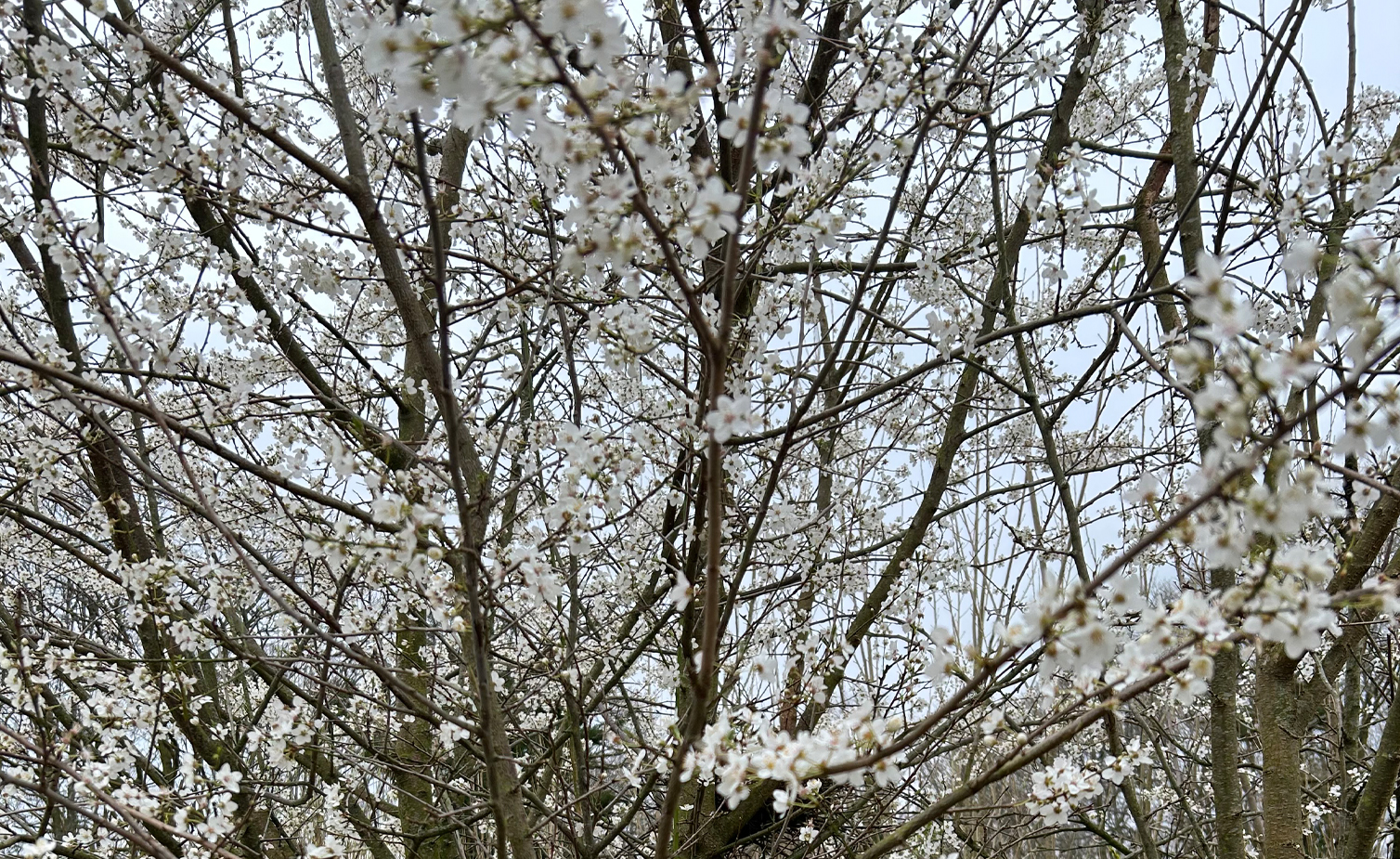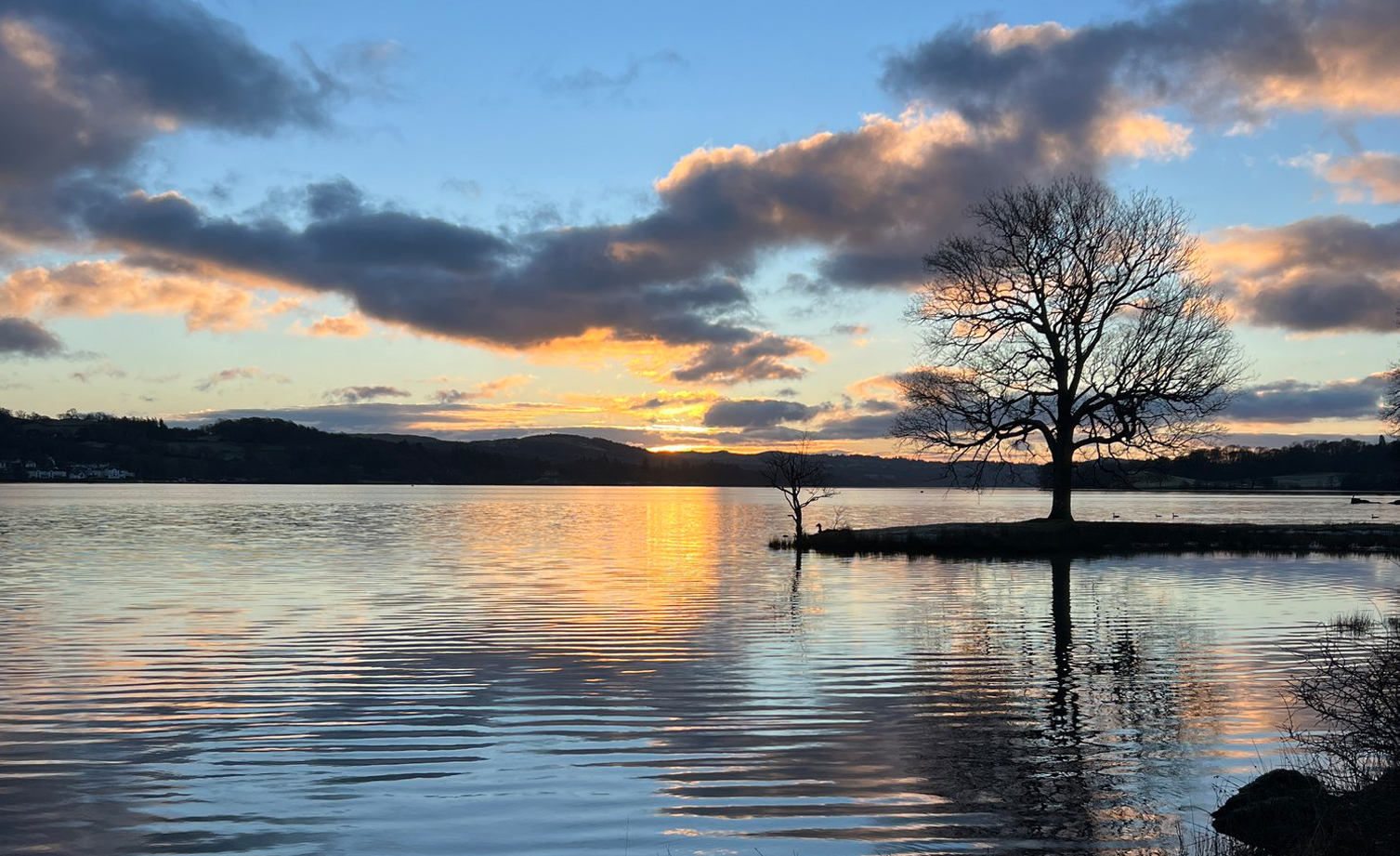A clifftop walk from Whitehaven to St Bees.
The piercing cry of a herring gull overhead as it swoops towards its nest on the towering sandstone cliffs. Below, the waves are crashing and tumbling over the rocks. This footpath feels like a different world to the Cumbria I am familiar with.
Tucked away in the far north west of England, just below the Scottish border, Cumbria is perhaps most famous for being home to the Lake District with its majestic mountains, serene lakes and quaint villages. But beyond the boundaries of the national park, there are over 180 miles of Cumbrian coastline to explore with quiet coves, sea bird colonies and relics of bygone eras.
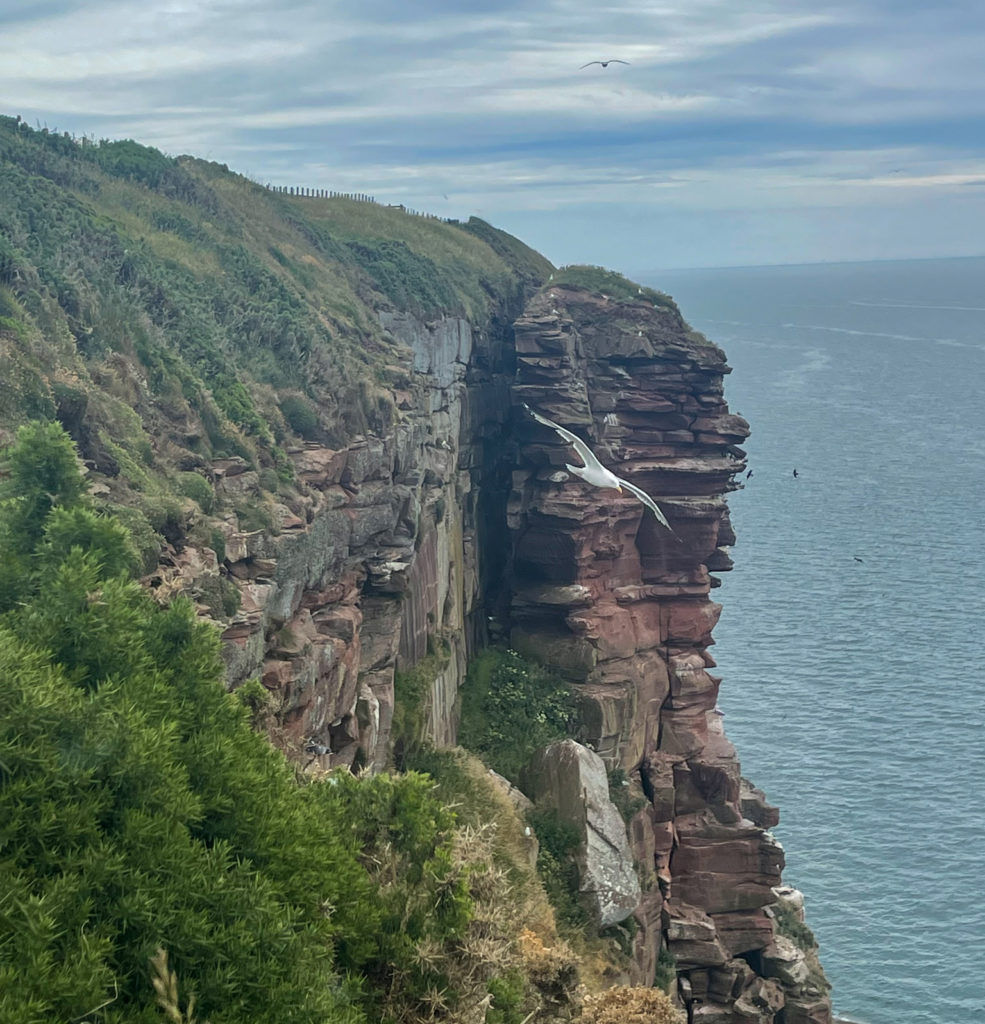
Arriving in the town of Whitehaven after taking two buses from the Lake District, I wander down to the marina where a flotilla of boats and yachts dance in the summer breeze. In the 17th century, these docks would have thronged with noise and bluster from trading activity. The port was the second largest in England after London and saw rum, sugar, cocoa and coffee imported from the Caribbean.
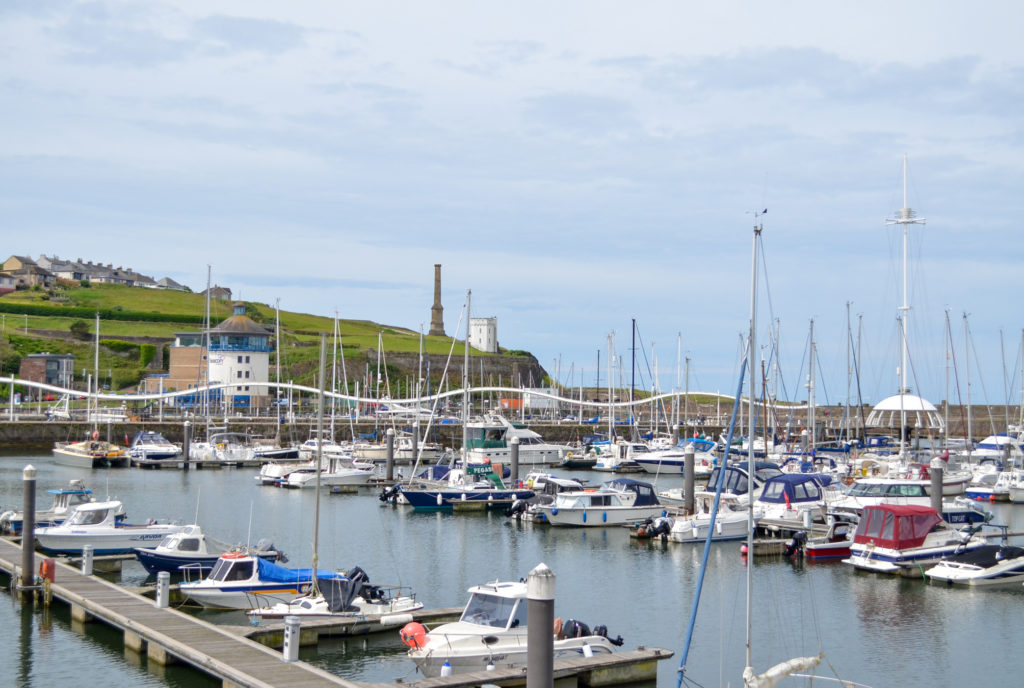
Climbing the steps towards the headland to pick up the waymarked route on the England Coast Path, I pass the imposing ghosts from Whitehaven’s industrial past. An old ventilation chimney is affectionately known as “The Candlestick” and the Haig Colliery coal mine was in operation for over 70 years until its closure in 1986.
Leaving the town behind, the dusty undulating path traces the line of the cliffs alongside wide open pastures dotted with the abundant gifts of mid-summer: cow parsley, dog roses and violet foxgloves standing to attention amongst a tangle of bracken and grass.
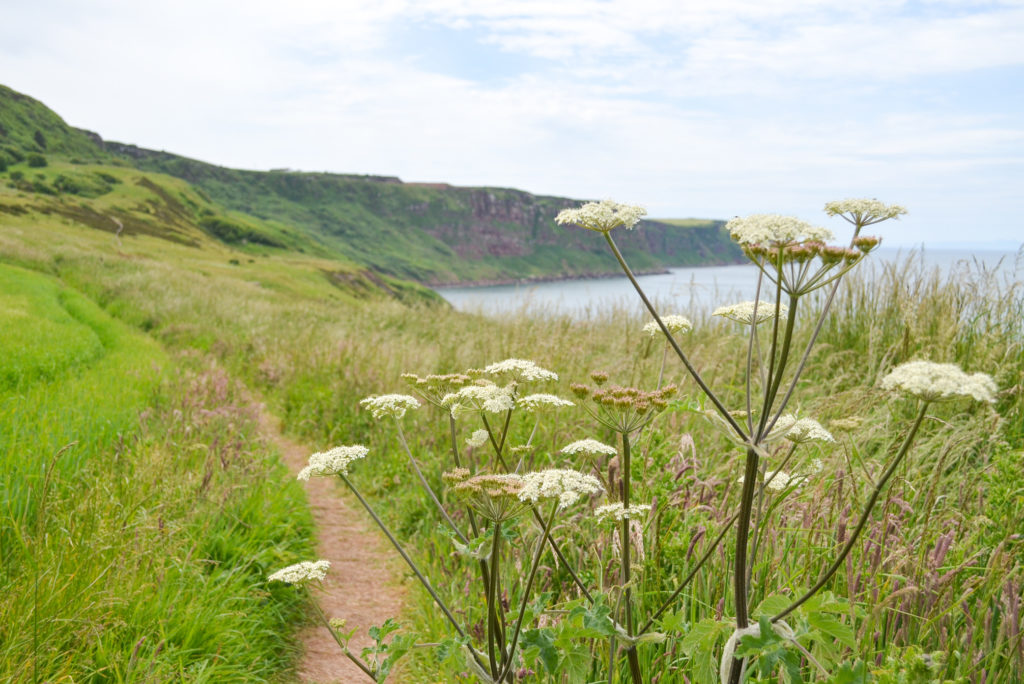
I pass the old lighthouse station and a sandstone quarry partially used for the construction of Liverpool Cathedral and approach the highlight of the walk – the RSPB reserve at St Bees Head. From May to July each year, this is the only cliff-nesting sea bird colony in the north west.
An offshoot from the main path leads down to a viewing platform where I’m mesmerised by the high-pitched cacophony of herring gulls, guillemots, fulmars and kittiwakes drifting like snowflakes in the sky and huddled into the nooks and crannies of the cliffs, raising their chicks. I feel the same sense of awe and insignificance I get from climbing the summits of the neighbouring Lakeland fells.
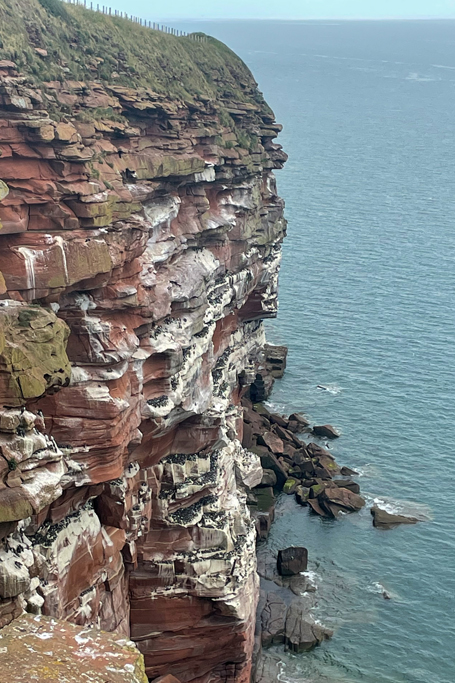
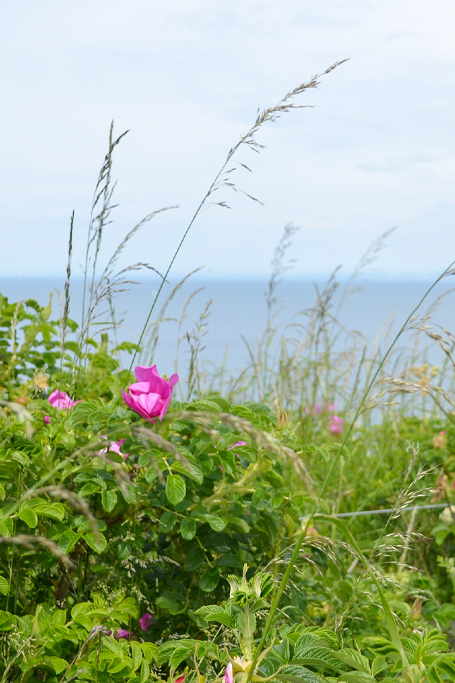
The wildflowers give way to open farmland, with sheep grazing lazily in the late afternoon sun. Salty sea air fills my lungs as a series of steps steeply descends into Fleswick Bay, like a scar cutting through multiple layers of the rusty-coloured sandstone.
I pause for a moment to watch the power of the waves wash over the rocks before beginning the climb back up towards South Head and an old World War Two coastguard lookout point. The information board sheds light on the sweeping skyline views of the Dumfries and Galloway coastline in Scotland and the Isle of Man only 30 miles away.
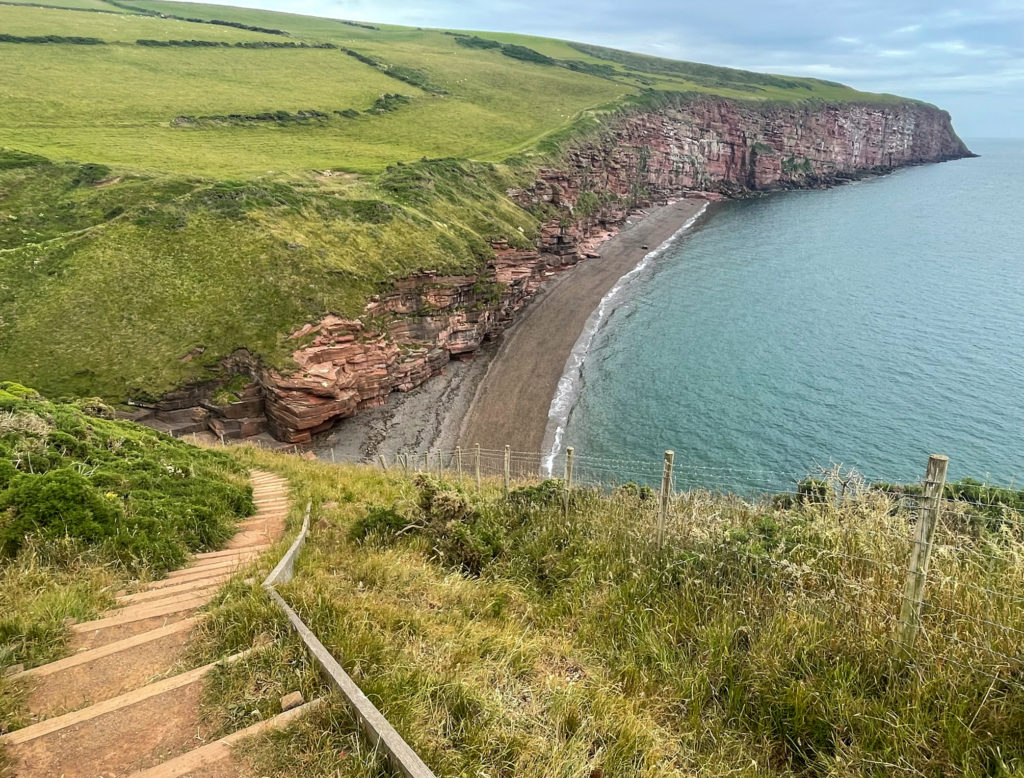
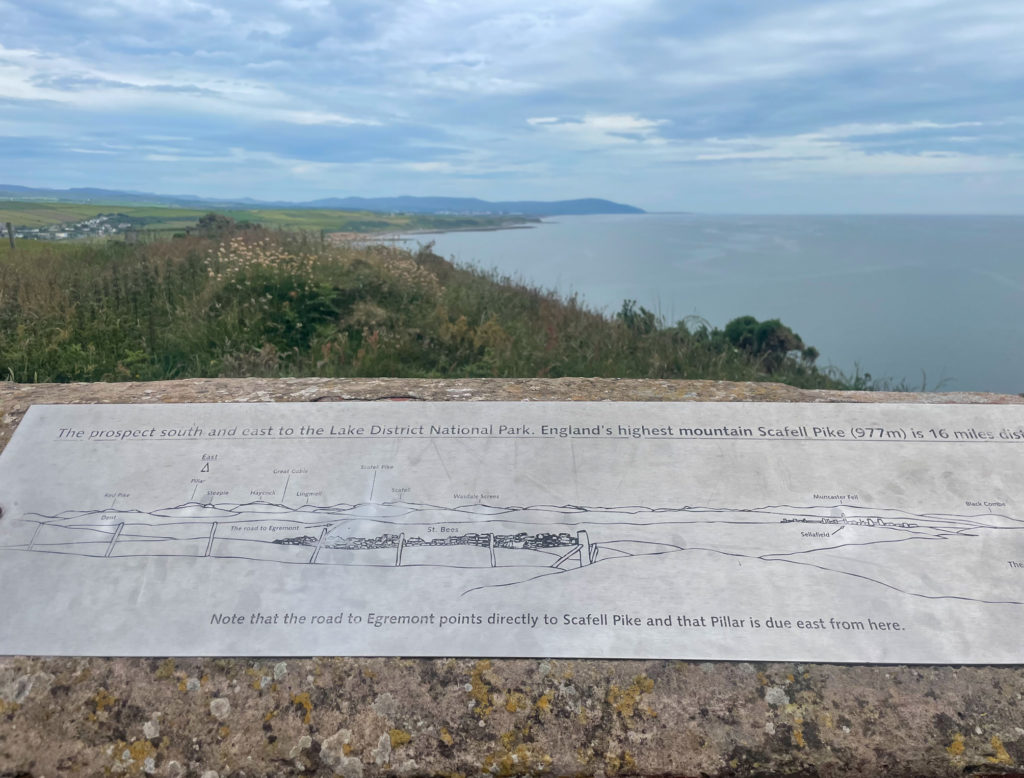
/ Walk Details
The walk can be started either in Whitehaven or St Bees and is around 6.5 miles with a total ascent of 800ft (244m) so allow around 3-4 hours to really enjoy the walk. Strong footwear is recommended as the path is rocky and uneven in places. A fairly frequent train service connects St Bees with Whitehaven, Workington, Barrow and Carlisle.
Rebecca is a writer and hillwalker based in Ambleside, find her on Instagram at @lookwithneweyes and at www.lookwithneweyes.com


